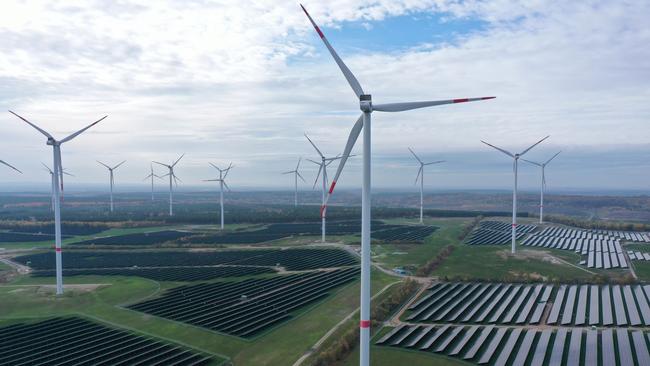Boosting critical minerals for clean energy transition an opportunity
A bid to use green energy to build an emerging hydrogen business here faces a new threat from the US, according to infrastructure investor Quinbrook.

Australia’s ambitions to become one of the world’s top green hydrogen exporters faces being undercut by a massive US stimulus but opportunities still lie in boosting critical minerals to supply the clean energy transition, investor Quinbrook Infrastructure Partners said.
The Biden administration’s Inflation Reduction Act sets out a decade of federal subsidies with $US437bn ($661bn) in spending focused on energy and climate change investments.
Quinbrook - a private investment fund specialising in renewable energy infrastructure - said Australia will struggle to compete with the US should President Biden deliver on the pledge.
“It does represent a material new export opportunity for this country that is analogous to the green superpower, but possibly not for the same reasons that we might have thought six months ago,” Quinbrook co-founder David Scaysbrook told a briefing.

“The reason we say that is those sort of statements of ambition previously were largely predicated on Australia becoming a green hydrogen export superpower. And the IRA has some bad news for Australia in that context. And that is the degree to which the hydrogen supply chain will be subsidised in the United States, which will make it very, very difficult for Australia to compete with US exports of green ammonia.”
“The degree of subsidy...will be devastating from a competitive perspective (for Australia).”
Still, the Quinbrook executive said there would be “fantastic opportunities” in raw materials and mining extraction with Australia well placed to develop its critical mineral industry.
A raft of high profile players have called for the Albanese government to look at a similar incentive to ensure Australia can deliver on its hefty green hydrogen ambitions.
Energy giant BP said the nation must look to replicate clean energy incentives by US President Joe Biden to ensure new industries like green hydrogen can develop into major industries.
Fortescue Future Industries chief financial officer Guy Debelle has previously said that Australia risks squandering a “huge opportunity” to become a green energy powerhouse if Canberra falls behind other nations in supporting the local industry.
At the time, Mr Debelle said Australia had a substantial comparative advantage in the development of green energy with its abundant supplies of sun and wind and large land mass.
Infrastructure including the complex task of transporting hydrogen from Australia to buyers in Asia looms as an important issue for the industry.
Green hydrogen - which taps renewable energy sources to split hydrogen from water - can be transported as ammonia and is favoured by big buyers in both South Korea and Japan. Australia has the potential to replicate its giant coal and LNG export industries with hydrogen given its vast resources of low-cost renewables and close existing trading links with two of the expected major international importers: Japan and South Korea, analysts at Goldman Sachs said in February.
A huge array of projects are in the pipeline across Australia as companies and investors look to capitalise on ample renewable resources to develop an industry that was a key plank of the Coalition’s technology-led solution to reach net zero emissions.





